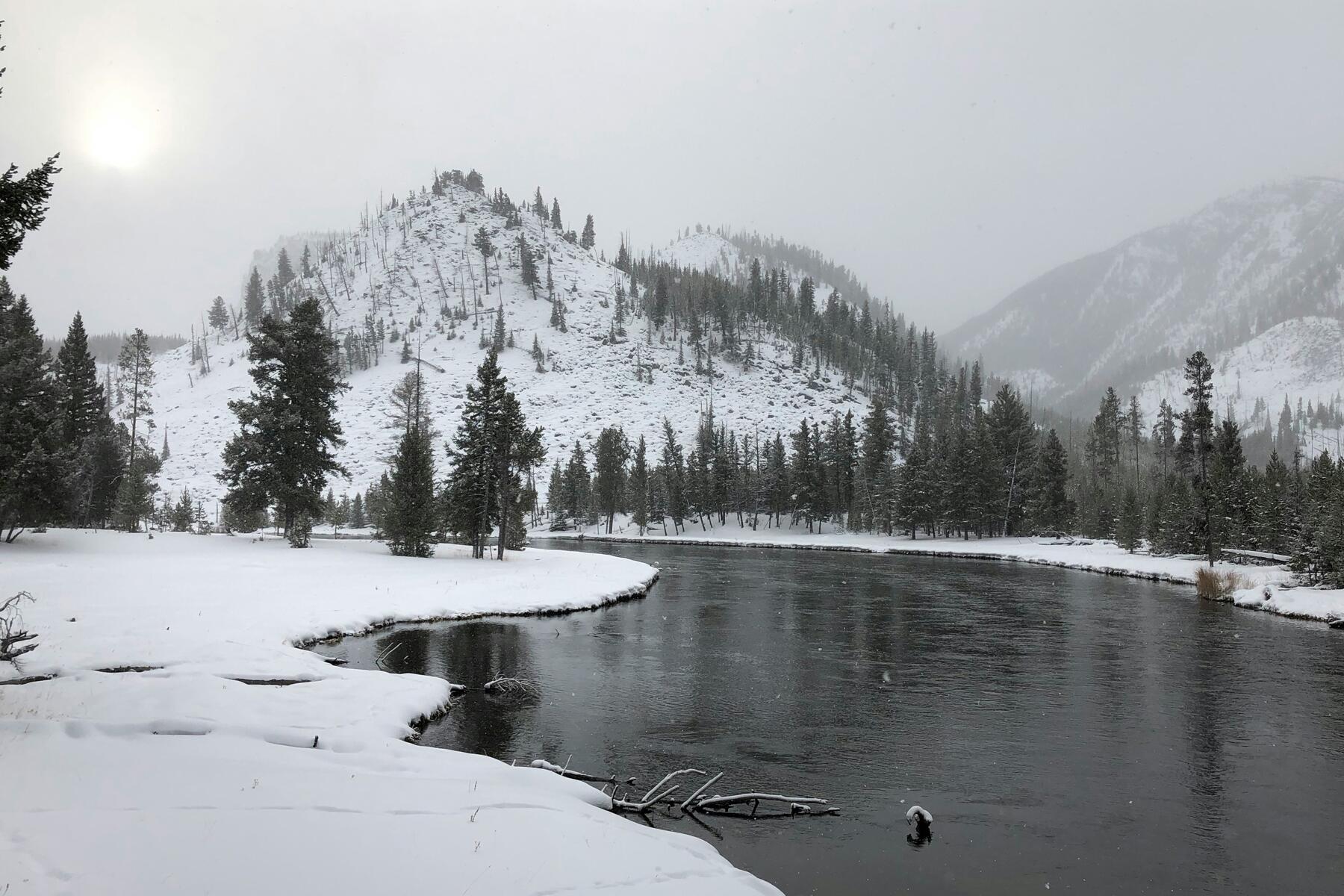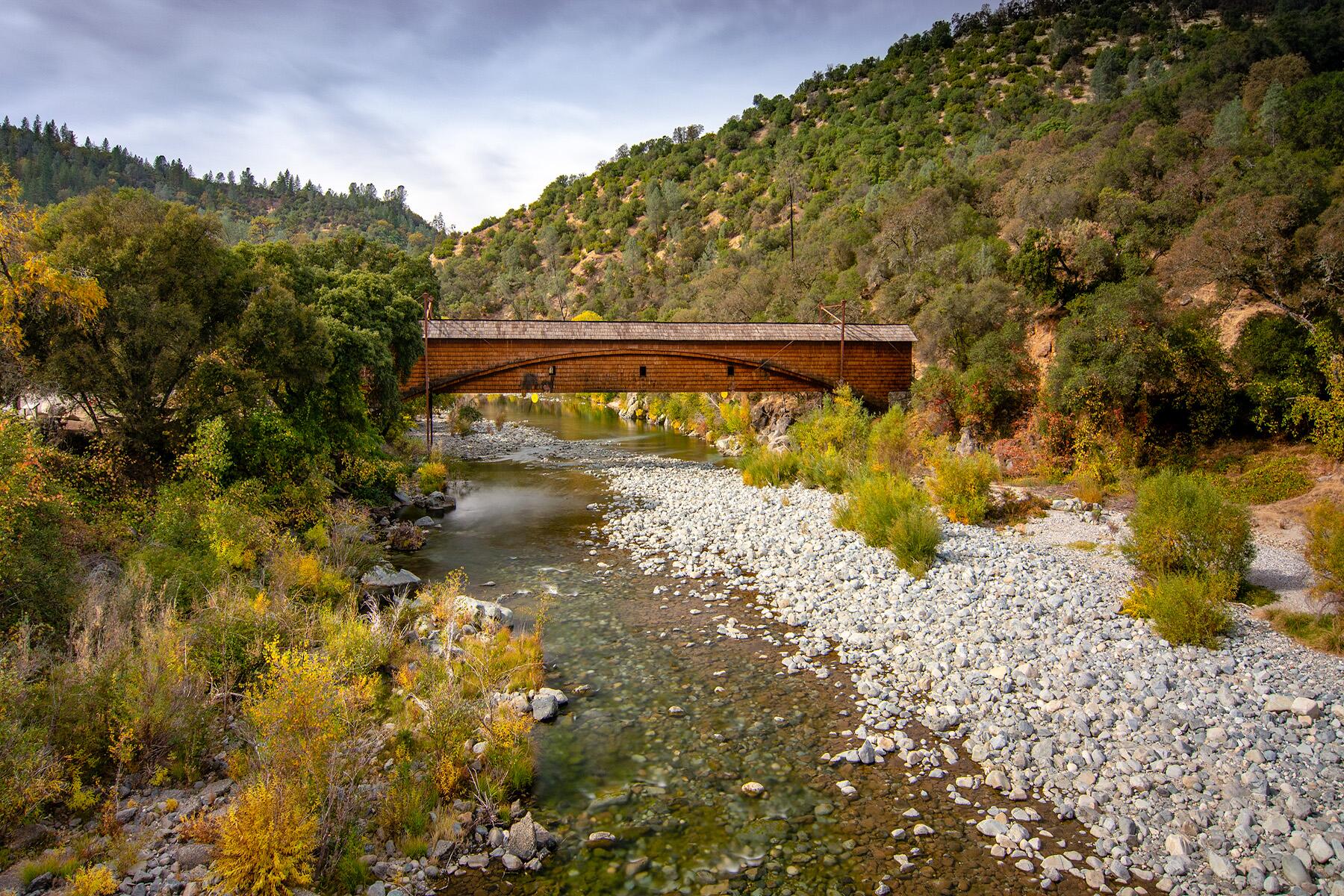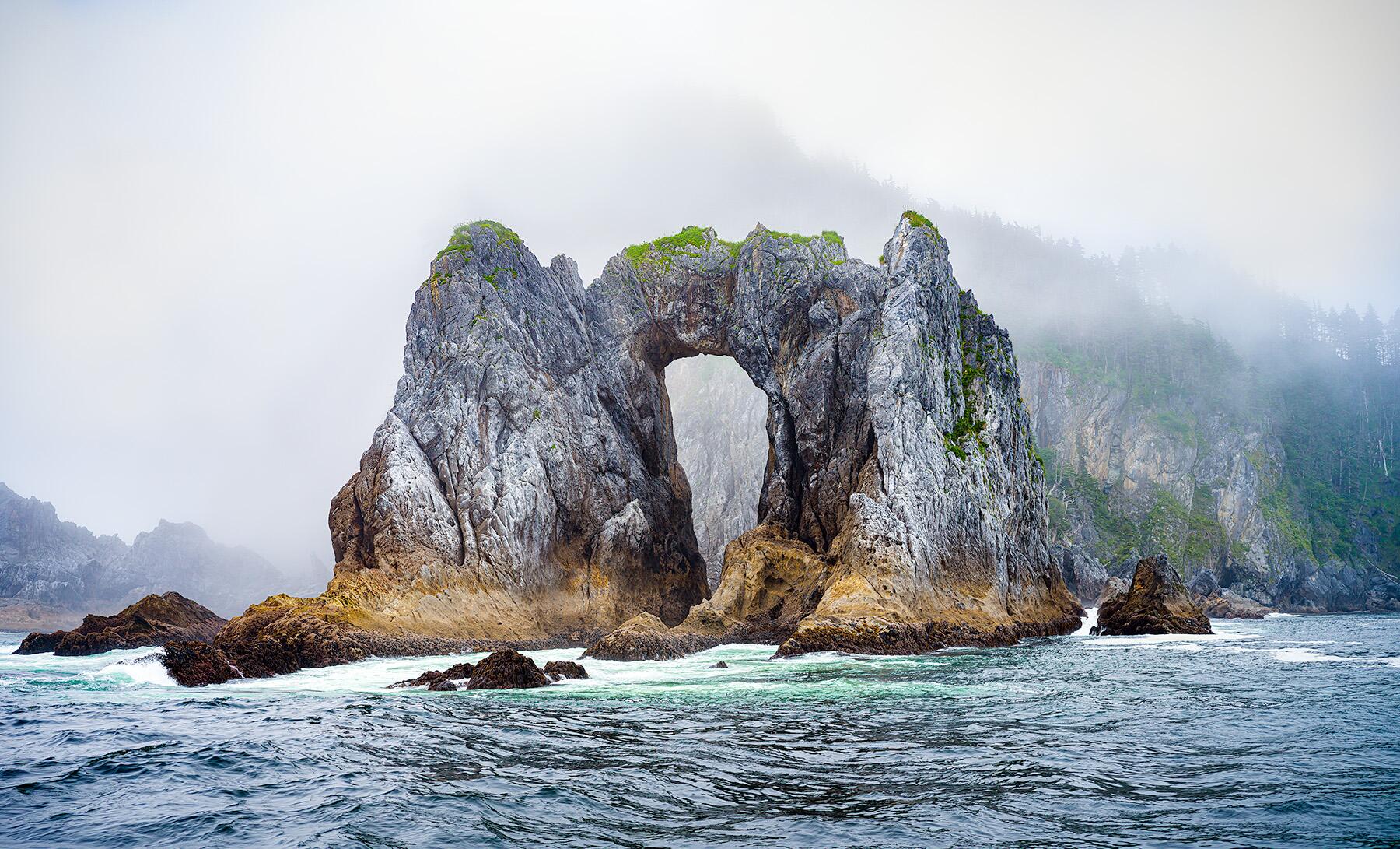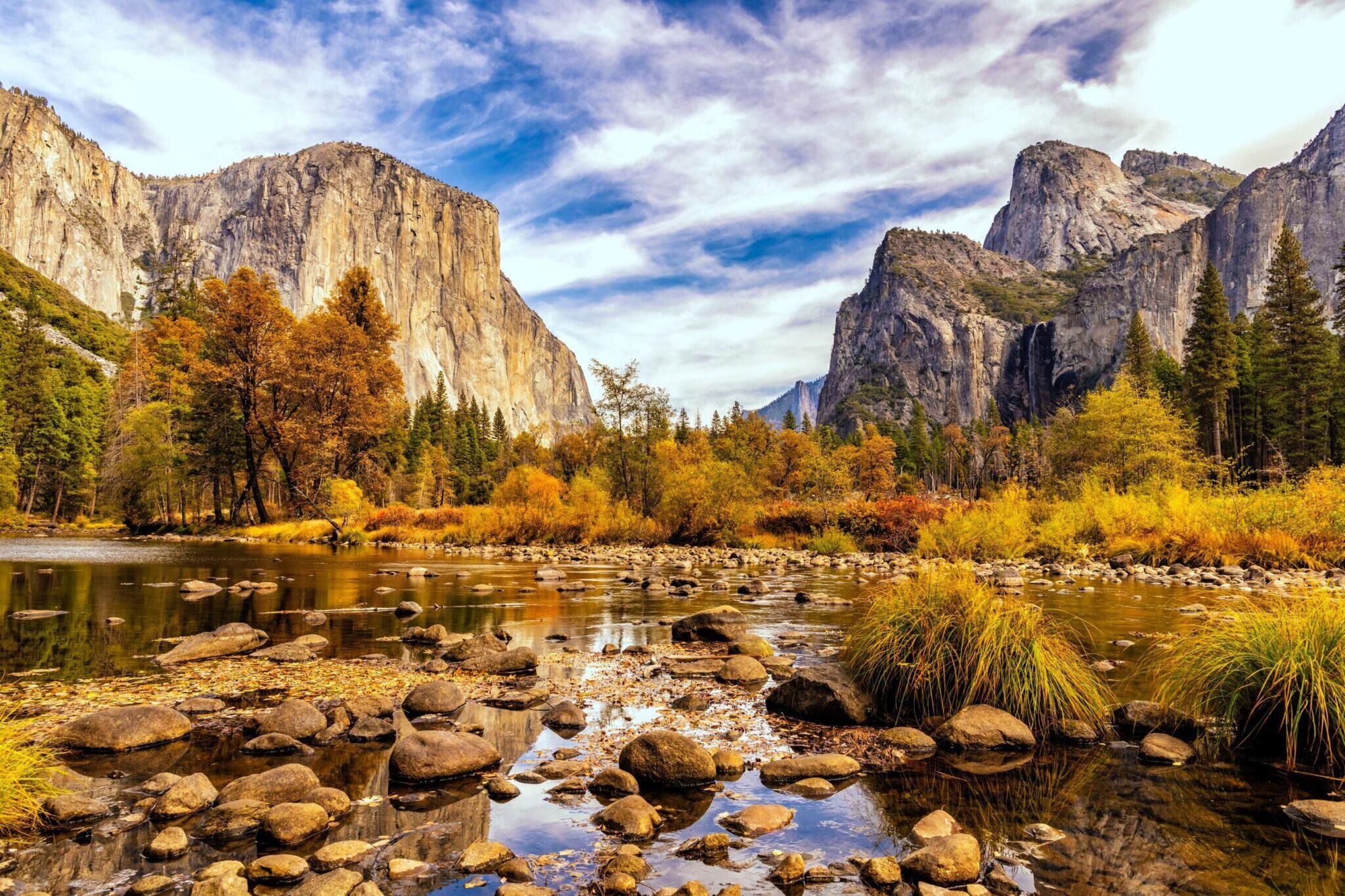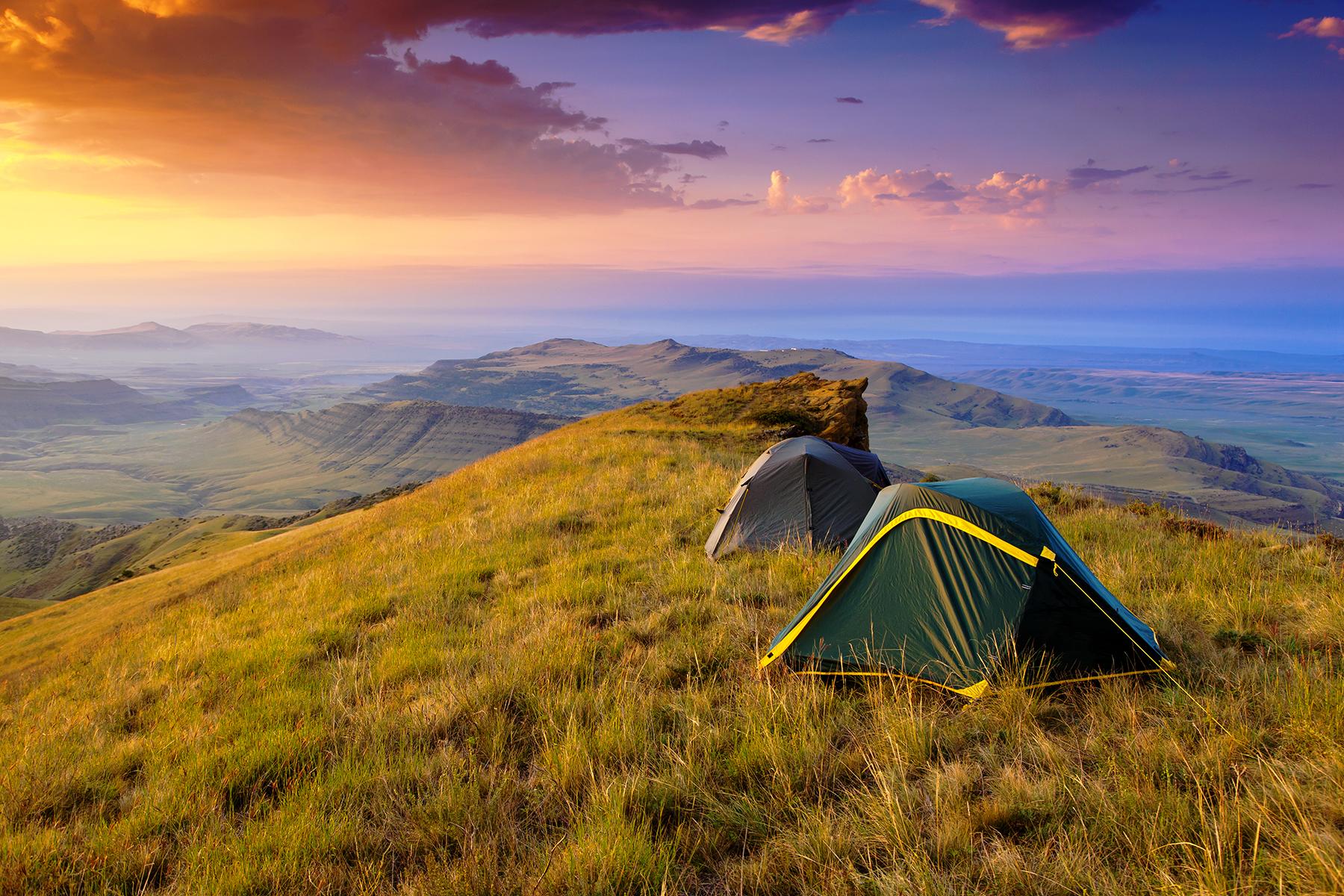Not all campgrounds are created equal. Here’s our definitive guide to the best of the best in America’s national parks.
Even at America’s national parks, where the bar is raised for everything from hiking to views, disappointing campgrounds are more common than one might expect. So what makes a good campground? For some of us, it’s flushing-toilets and RV hookups, while others seek solitude no matter how primitive the facilities. Whatever your preferences, all campers can agree on two things: a good campground should be spacious (no one wants to hear their neighbor snoring) and, of course, scenic. Here are our 25 favorite campgrounds in America’s most spectacular national parks.
Slough Creek Campground
Slough Creek, a popular Yellowstone fishing spot, is where you’ll find the park’s best campground. Slough Creek Campground is small—there are just 16 sites, only 14 of which are large enough to accommodate an RV—but it’s located in the heart of the Lamary Valley, one of the best places for viewing wildlife in the park. The most primitive of Yellowstone’s campgrounds and sites, the accommodations are distributed among the banks of the stream, meadowland, and forest. Space is available on a first-come first serve basis from May to October. When the sun goes down, listen closely—you may be able to hear Slough Creek’s wolf pack baying.
Fruita Campground
Capitol Reef National Park is known for its cliffs and canyons of red rock, which makes Fruita Campground something of an anomaly. Fed by the Fremont River, which rolls along the campground’s edge, Fruita is literally an oasis in the desert, surrounded by the cool, green shade of historic orchards. During the peak season, most of the 64-tent/RV sites and seven walk-in sites, complete with flushing toilets, running water, and fire pits or grills, can be reserved; during off-season they switch to a first-come first-serve system.
Recommended Fodor’s Video
Wonder Lake Campground
WHERE: Denali National Park, Alaska
The shadow of Denali National Park’s namesake, the Denali peak (AKA Mount McKinley), looms over this lakeside campground. Wonder Lake Campground is wholly primitive; flush toilets and potable water are only available in the summer when the mosquitos are at their most fierce. The rest of the year, vault toilets and bear boxes are the only amenities available and fires are never allowed. But the views from Wonder Lake Campground are truly unbeatable, from the waterfowl that call the lake home and the moose that occasionally pass through, to North America’s highest peak—so close you feel you can almost reach out and touch it.
Piñon Flats Campground
After a day sledding down the largest sand dunes in North America, Piñon Flats, a decidedly un-sandy campground protected by the shade of cottonwood and conifer, is where you want to be. The Great Sand Dunes National Park’s April-October seasonal campground has 88 individual sites and 15 group sites, all of which are framed by views of the dunes and the Sangre de Cristo Mountains in the distance. All campsites require reservations and come complete with fire pits and picnic tables. Each loop of the campground has restrooms with flush toilets and potable water.
Lost Creek Campground
To every Crater Lake National Park visitor’s disappointment, there are no campsites directly on the eponymous body of water. In fact, there are only two campgrounds within the park’s boundaries, the 212-site behemoth Mazama Campground featuring a restaurant and gas station, and the Lost Creek Campground. While Lost Creek is located in a forest south of the crater, it’s nonetheless pretty and serene, if somewhat more primitive than Mazama (mostly because every campsite compared to Mazama is primitive, despite the presence of flush toilets). Lost Creek Campground is open July through October for tents only on a first-come first-serve basis.
Lower Pines Campground
There are nearly a dozen different campgrounds within Yosemite National Park, but only one where you can wake up to stunning, unobstructed views of the Half Dome and its granite-faced cliff companions. Located at the heart of the park, the Lower Pines Campground is lightly shaded with pine trees and strategically positioned near the Yosemite Valley’s best sights and trails. The 60-campsite grounds are open from April to October. Reservations are required and can fill up as much as six months in advance.
White River Campground
Three thousand feet into a glacial canyon, 112 tent-only campsites make up Mount Rainier National Park’s White River Campground. White River is nestled in a forest with pine-laden slopes that soar upwards toward the sky. It’s a large campsite, and although the amenities are fairly basic (vault toilets instead of flush and no potable water), the location in the northeastern section of the park makes it a great home base for exploring. White River Campground is open seasonally—June through September—and sites are available on a first come first serve basis.
Garden Key Campground
Garden Key Campground at Dry Tortugas National Park is, shall we say…remote. It can be reached by a daily ferry or private boat but once you’re there, there’s nothing but sun, sand and blue water, plus the historic Jefferson Fort, open for exploration from sunrise to sunset. Anything else you might need—water, food, charcoal—all have to be packed in and packed back out. With no campfires allowed on the island, all eight campsites have incredible nighttime views of the stars above.
North Rim Campground
One of America’s most iconic national parks, it’s no surprise to learn that the Grand Canyon is often crowded. Most visitors, though, stick to the park’s South Rim, leaving the less populated North Rim open to campers in search of wildlife and a little tranquility. The North Rim Campground is a whopping 8,200 feet in elevation bordering the Transept Canyon, an offshoot of the main canyon, of which some sites have fantastic views. The 90-site campground, open May through October (reservations only), is located a mile south of the Grand Canyon Lodge and visitor center.
Bartlett Cove Campground
There’s only one real campground at Glacier Bay National Park but if your plan is to stick close to the park’s core and not kayak into the backcountry, it’s a beautiful place to stay. Bartlett Cove is a large, walk-in campground (a short 1/4-mile walk for which the park provides wheelbarrows to help schlep your stuff), but the campsites are relatively sequestered among old-growth Sitka spruce, western hemlock, and wild blueberry bushes teeming with fruit. Located just meters from the shore of Bartlett Cove, you’re as likely to see sea otters frolicking in daylight hours as you are to hear whales calling at night. A communal firepit and warming hut will help keep you toasty on the often-foggy, sometimes frigid Alaskan coast.
Kipahulu Campground
WHERE: Haleakala National Park, Hawaii
The coastal overlook at Haleakala National Park’s makes the Kipahulu Campground hands-down the best “car camping” site in the park. Just a short walk from the ‘O’he’o Gulch and a number of hiking trails on the wetter, eastern side of Haleakala, the gentle rolling of ocean waves are the soundtrack to a night’s stay at Kipahulu. The first come, first served campground has pit toilets and each site is equipped with picnic tables and grills.
Watchman Campground
WHERE: Zion National Park, Utah
The Watchman Campground at Zion National Park fills up months in advance, and for good reason: This massive 176-site campground located a 1/4 mile from the south entrance and visitor center sits in the shadow of the iconic Zion rock formation. Despite its size, there’s enough space between campsites, spread out among six loops, to preserve your camping experience. For something more private try one of the 18 walk-in sites at the campground. In addition to firepits and clean bathrooms with flush toilets, some of the sites have shade trees to relax under after a long, hot day of traversing the The Narrows.
Duck Harbor Campground
WHERE: Acadia National Park, Maine
Nothing says “solitude in wilderness” like camping on your own private island. At Acadia National Park’s Duck Harbor Campground, five lucky campers per night get to stay on the remote 6-by-2 mile Isle Au Haut, a rugged, forest-covered island off the coast of Stonington, Maine. Hiking trails abound on the Isle au Haut and the campground is set up with composting toilets, fire rings, lean-to shelters and a water pump. The campground is only accessible by boat, so either bring your own canoe or kayak, or catch a ride on the ferry which leaves daily from the mainland.
Jumbo Rocks Campground
WHERE: Joshua Tree National Park, California
The accurately named Jumbo Rocks Campground is woven among the stacked and strewn oversized volcanic boulders unique to Joshua Tree National Park. Several hiking trails begin at Jumbo Rocks, a 126-campsite facility with vault toilets. During Joshua Tree’s peak season, October through May, hikers and rock-scramblers who reserve the campground well in advance are rewarded with views of the boulders whose colors shift throughout the day, from the morning sunrise to the fire’s glow. In the hot, dry summers, Jumbo Rocks is first-come, first-served.
Chisos Basin Campground
WHERE: Big Bend National Park, Texas
Surrounded by rugged cliffs high in the Chisos Mountains, Big Bend National Park’s Chisos Basin Campground is a picturesque slice of montane shrubland, featuring Arizona Cypress and desert-hearty mesquite trees. Chisos Campground is positioned close to the park’s most popular trails, including the Lost Mine Trail and Pinnacles Trail, and its highest point, Emory Peak. Almost half of the campground’s 60 sites can be reserved in advance (November to May) and 18 of them (non-reservable) allow the use of a generator. All sites have grills instead of fire pits, and the campground is replete with flush toilets and drinking water.
Moraine Park Campground
It’s hard to picture a campground more beautiful than this one, spread out over a Douglas fir and pine forest, surrounded by a meadow of tall grasses and wildflowers and watched over by craggy peaks up to 14,000 feet tall. Moraine Park Campground is a magnet for Rocky Mountain National Park’s abundant elk and white mule deer and its location near the Beaver Meadows entrance makes it an excellent home base for exploring the park on foot or by car. On the grounds you’ll find flushing toilets, firepits, and a whopping 247 campsites (including 49 walk-in sites) open for reservations during the summer season (all sites are first come, first served in the winter).
Cades Cove Campground
Cades Cove is the beating center of Great Smoky Mountains National Park, with easy access to hiking trails (like the beloved 5-mile round-trip to Abrams Falls), fishing, horseback riding, and other adventures. It’s one of the Smoky Mountains’ most frequented campgrounds (with 147 reservable sites for tents and RVs) and for good reason reason: The broad valley is blanketed in wildflowers in spring, frequented by deer, and surrounded by mountain peaks. Cades Cove Campground offers everything from bike rentals to interpretive programs (held at the onsite amphitheater), not to mention flush toilets and potable water. Also, it’s open year-round.
Kintla Lake Campground
WHERE: Glacier National Park, Montana
Just south of the Canadian border, Kintla Lake is Glacier National Park’s most remote developed campground. Perched on the edge of the pristine lake, this 13-site, RV-free campground offers solitude in spades. The lake, the park’s fourth largest, surrounded by sharp peaks of glacier-carved mountains, is ideal for exploring via canoe or kayak. Amenities at the campsite include a vault toilet and hand-pump for potable water. Get your huckleberry macaroon fix at the mercantile in Polebridge, the closest community located 14 miles down the bumpy dirt road to the campground.
Azalea Campground
WHERE: Kings Canyon National Park, California
Kings Canyon National Park’s best campground, Azalea, is sheltered by towering pines and sequoias, the ancient, living giants that make this park so breathtaking. Azalea Campground is hilly and dotted with massive boulders, creating a sense of privacy among its 110 first come, first served sites. A short walk away you’ll find the General Grant sequoia grove and the largest tree in the park. Equipped with flushing toilets and potable water, Azalea is open year-round and all sites accommodate RVs (without hookups).
Moskey Basin Campground
WHERE: Isle Royale National Park, Michigan
Each of the 36 campgrounds at Isle Royale National Park can only be reached by foot or boat and all require a permit for overnight stays. Moskey Basin Campground is about a 10-mile hike from Rock Harbour, and when you arrive you’ll be rewarded with spectacular views of the Lake Superior shoreline. Moskey has 10 campsites, outhouses and a water source, as well as firepits ringing the grounds.
Lewis Mountain Campground
WHERE: Shenandoah National Park, Virginia
Lewis Mountain Campground at Shenandoah National Park is the best of both sides of the camping spectrum—on one hand it’s small (the smallest campground in the park) and the sites are well spaced for privacy, on the other hand it’s within miles of Shenandoah’s popular Big Meadows recreation area. This little slice of convenient solitude has 30 campsites originally built in 1939 to accommodate African American visitors to the park during the age of segregation. Today, the shady grounds are open to all and include a lodge and eight cabins for those who prefer life’s creature comforts.
Jenny Lake Campground
WHERE: Grand Teton National Park, Wyoming
This campground is just a short walk from Jenny Lake, one of Grand Teton National Park’s most breathtaking sights. The glacial lake, framed by the craggy Teton range at the edge of the Cascade Canyon, is a favorite among kayakers and canoers (both can be rented on site), fishermen in search of lake trout, hikers, climbers and bikers. The Teewinot peak hovers over the 59-site first come, first served campground, which has flush toilets and fire pits. The Jenny Lake Store, a five-minute walk from the campground, sells firewood and snacks to fuel you through the night.
Kalaloch Campground
WHERE: Olympic National Park, Washington
It’s hard to choose the best campground at Olympic; this national park has so many different ecosystems within its boundaries that all of its campgrounds are worth a night’s stay. For truly epic sunset views, though, the Kalaloch Campground can’t be beat. Perched on the edge of a cliff overlooking the Pacific Ocean, this 166-site campground feels like it’s on the edge of the world, or at least North America, because it is. You can even see the view from your tent if you select the right campsite. Kalaloch Campground is open year-round and has firepits, flush toilets, potable water and an RV dump station.
Texas Springs Campground
WHERE: Death Valley National Park, California
Don’t expect your Death Valley campground to be particularly interesting; remember, this park is dedicated to the hottest place on Earth and its campgrounds are little more than flat expanses of desert. Look around, though—the massive size of this place and the quickly shifting shades of the desert will take your breath away. Texas Springs is one of the most secluded car and RV-accessible campgrounds, located just a mile from Furnace Creek where you can fuel up your vehicle and your belly. There’s even a bit of blessed, shade-giving foliage along with flush toilets and potable water. For more privacy, try one of the lower tent sites. It’s open from November to April.
Colonial Creek Campground
Morning mist swirls over the bright, glacier-fed turquoise waters of Diablo Lake just a stone’s throw from the Colonial Creek Campground at North Cascades National Park. It’s not a small campground—94 sites altogether—but Colonial Creek is relatively remote, protected by old-growth forest on the south side of Route 120. A number of good hiking trails begin at the campground (and there are others just down Route 120) and the lake is popular for fishing and brisk swims. The campground offers all the standard amenities—flush toilets, firepits, potable water and garbage cans—and is open for reservations May through September.
